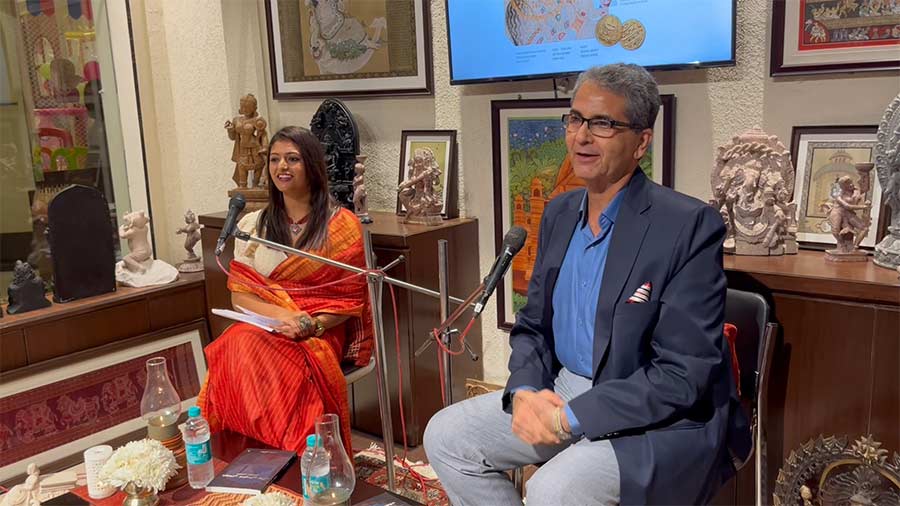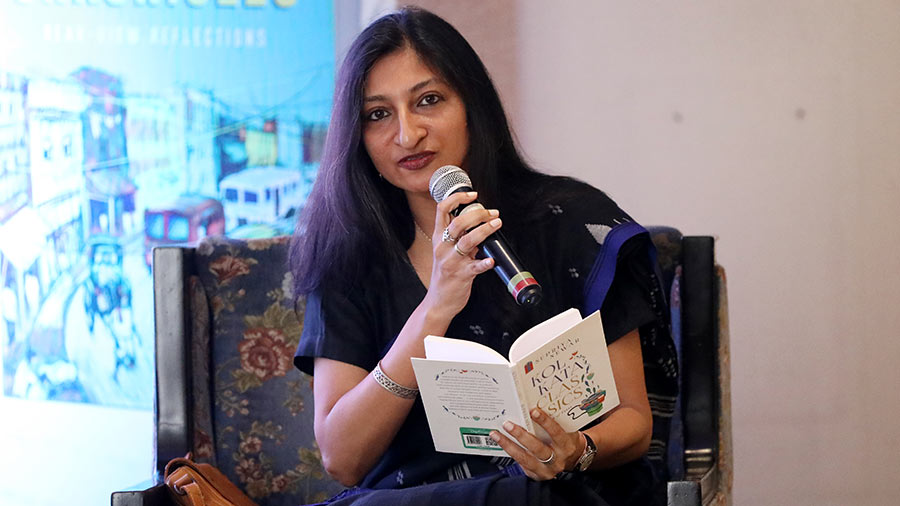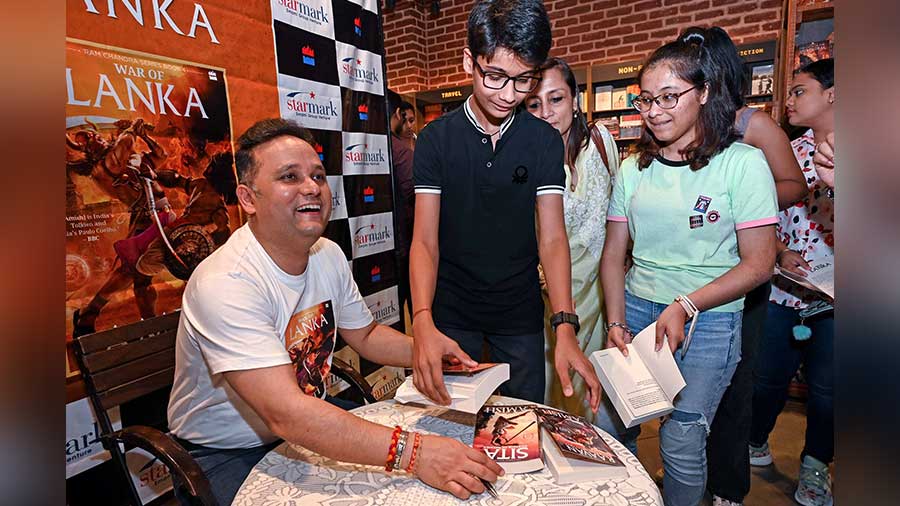It was a journey back in time for the audience at Karu Experience Centre on November 26 as author Vama Gaur read out excerpts from her latest book, The Mughal Harem, and chatted with Shahanshah Mirza, a descendant of Nawab Wajid Ali Shah.
The Mughal Harem, published by CleverFox Publishing, is a unique narrative told from the perspective of Firdouz, Begum Jahan Ara’s lady-in-waiting. The book is an in-depth exploration of the enigma that the Mughal rule and the royal household was. The narrative bares the dark secrets, both personal and political, of the Mughal monolith, the rulers and the royal family, making it an intriguing read.
Speaking to My Kolkata after the event, Gaur described the book as “an amalgamation of a lot of facts and a little bit of fiction”. “Putting in only facts would not have made for an interesting read. I wanted to fictionalise it a bit. This book is told through the eyes of a lady-in-waiting. Her name is Firdouz. She is the lady-in-waiting for Jahan Ara who is Shah Jahan’s daughter. This lady sees exactly how the household works, how the prince and the princess work, how the father treats his daughter and vice versa; the kind of jealousy, intrigue, authority and power that exists in the Mughal household. You know, day-to-day activities and their connections to hidden motives or veiled intentions. This lady witnesses Jahan Ara’s journey. Midway, I have briefly included a Nur Jahan phase because she was the grand-aunt,” the author said.
The Mughal Harem also attempts to bust the myth that Mughal women were subdued or just passive non-entities in the royal household. “The kings used to be influenced by the queens, or the Padshah Begum [empress consort or the First Lady of the Mughal empire], during the Mughal era and their decisions also changed with their mood swings and what they wanted in life. The kind of understanding we have of Mughal women as passive, that is no more. Once you read the book, you will consider the Mughal women, whom we consider as passive, were very much up to the mark. I think they were one of the most educated clans in the entire world. That shows in their speech and work. They had authored books like Baburnama,” Gaur said.
In her book, Gaur also talks about how the harem, which is considered a place of sexual activity and lust, is in reality much more than that. “Generally the harem is considered to be a very sexual place where the king would go and sleep with the ladies and get entertained. But that is not how it was. It was more of a Portuguese version, the sexualised place. But if you actually read through the book, you will realise that the Mughal harem was definitely much more than that.’’
Gaur has delved deep into Mughal history in creating the book. Commenting on the research work she took up for The Mughal Harem, Gaur said, “It was more of book reading, basically. I wouldn't say that I have seen videos and interviews. I haven't done that. I am more of a reader. I read up books on Mughal women, and though I could not read Baburnama and Humayunnama, I think three or four books on related topics written by eminent writers helped me quite a lot.”
“I was very surprised to know that Old Delhi, at that time it was called Shahjahanabad, was made by women. The architect was Jahan Ara, Shah Jahan’s daughter. That was a very big surprise for me. I don't think very many people know about it,” Gaur said.
In spite of the hold that Gaur has over history, the author confessed to not liking history lessons initially but remembers developing a keen fascination for the subject over time. “I read The Mughal Harem by K.S. Lal and Daughters of the Sun by Ira Mukhoty and some more books after that. I started realising that history is not just about dates, facts and fiction. It's more about the day-to-day activities and how they emerged into powerful women. Those incidents actually compelled me to write more about them. In books generally, we see only a two-page chapter about women in history or women in the Mughal era, but there’s a lot more to be explored. I think you can actually write books on them, not just confine them to only two pages.’’
Following the discussion about the book and Mughal history, a fun quiz compelled the audience members to recall their history lessons from the good old school days. The question-and-answer session touched upon interesting topics like the use of potatoes in Kolkata’s biryanis, landmark events of the Mughal dynasty and more. The event ended with a book signing session by the author.








